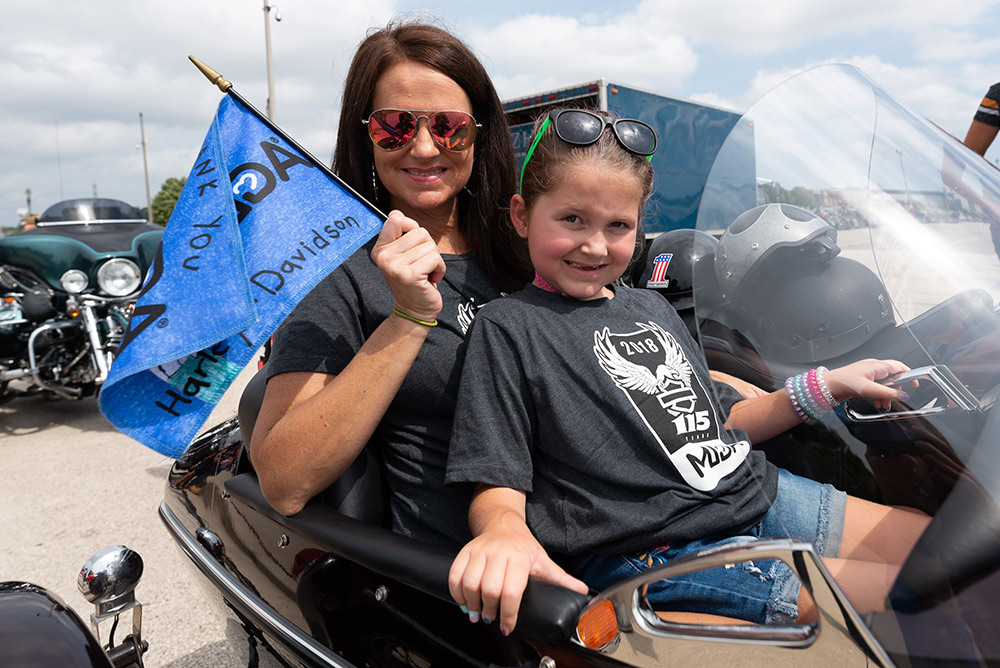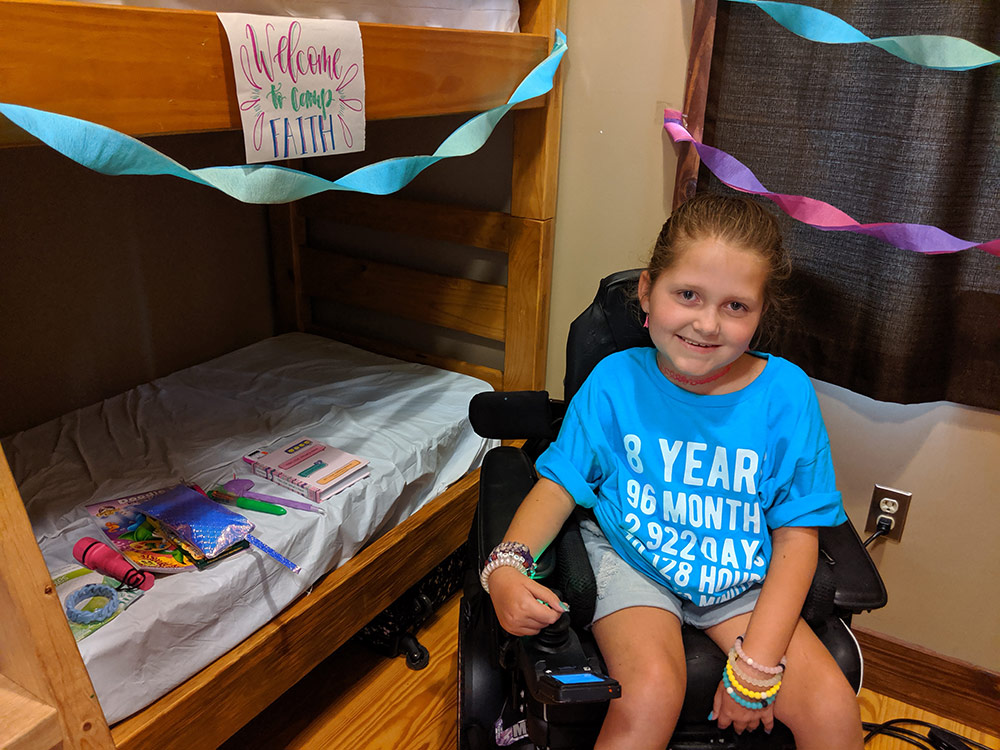2013年的一天,莉安·福滕贝里正开着车,接到了电话。
电话那头是沃思堡一位医生,先问了她在做什么之后,让她把车停在路边。医生说,她的小女儿费思确诊患有脊髓性肌萎缩症(SMA),这是一种罕见的遗传性神经肌肉疾病,病人的肌肉会逐渐萎缩。
她最怕的就是这个消息。费思18个月大的时候就开始有点不对劲。她都开始学说话了,还是站不起来。后来送去医院会诊,专业人士说只能希望不是脊髓性肌萎缩症。然而验血之后,之前的希望破灭了。
福滕贝里像所有听到不幸消息的家长一样提出问题:费思还有希望走路吗?她能活下去吗?
医生说,不知道。
“我坐在路边哭了一个小时。”她说。
如今费思已经8岁。虽然她的行动仍然受限,但在使用渤健公司(Biogen)针对脊髓性肌萎缩症的药物后,症状有所缓解,Spinraza是2016年美国首款批准的药。赶上新冠病毒流行,她和母亲的生活以及成千上万与类似疾病抗争的美国家庭生活遇到了新的挑战。

脊髓性肌萎缩症是神经肌肉疾病之一,相关疾病包括杜氏肌营养不良和肌萎缩侧索硬化症(ALS),或葛雷克氏症(即渐冻人症——译注)等。
新冠病毒危机给患有类似疾病的患者造成了巨大挑战。病人的健康面临更大威胁,新药开发节奏扰乱,护理人员的负担也在增加。
“该类患者也是感染新冠的高风险人群之一。”肌营养不良协会(MDA)的主席兼首席执行官林恩·沃斯说。类似疾病会影响所有肌肉,其中也包括支撑肺部的横膈膜,导致呼吸困难。而且,致命的呼吸系统疾病本来也容易危及生命。
“新冠病毒有可能导致他们死亡。”她说。
沃斯补充说,如果病人因为自身慢性病而需要紧急吸氧,但由于担心感染新冠病毒,现在不可能指望急诊室。
在美国,罹患脊髓性肌萎缩症、肌萎缩侧索硬化症和各类肌营养不良症的病人约27.5万。由于患者的病情和疾病各不相同,从幼年到成年各种年龄都可能死亡。
据介绍,肌营养不良协会为非营利组织,也是联邦政府以外最大的神经肌肉疾病药物研发和患者护理研究资助机构,70多年投入了超过10亿美元用于研发新的治疗方法。
然而疫情期间,研究遭遇了重大挑战。
“研发方面出现了很多慌乱局面。”莎伦·海斯特利说,她在生物制药行业从业20年,现在担任肌营养不良协会的首席研究官。“很多(临床试验)暂停。除非是紧急情况或手术治疗,现在让病人到医院参加临床试验真的很难说通。”
对于神经肌肉疾病试验正在进行中的机构来说,任务相当艰巨。有些机构在将治疗试验方案提交给美国食品与药品管理局审批时,数据都不完整。向监管部门提交申请可能大大推迟。
问题还不仅限于罕见疾病。遭逢新冠危机,美国食品与药品管理局推动了针对多种疾病的虚拟临床试验。然而,此举对神经肌肉疾病患者群体造成的影响特别严重,因为照顾此类病人相当困难,寻求新治疗方案非常重要。
但海斯特利说,面对逆境,肌营养不良协会的受助人也发挥了创造力。
判断神经肌肉疾病治疗效果有个关键指标是6分钟步行测试。病人要在6分钟内尽可能走路。由于目前无法在诊所测试,一些小组已经将双向摄像机送给研究参与者及护理人员。患者可以在家中观察并记录结果,在保证安全的前提下测试。
“正常情况下肯定不会这么做,但现在显然不正常。”海丝特雷说,他听说至少有两个不相关的病人小组在使用该方法。
今年4月初,肌营养不良协会成立了新的医疗咨询小组,就影响神经肌肉疾病患者研究和护理的各种课题发布指导意见。4月2日,肌营养不良协会的现任首席医疗顾问巴里·伯恩博士与首席宣传官克里斯汀·斯蒂芬森在Facebook上举办了在线活动,探讨病毒肆虐期间的好做法。参与人数惊人之多。
“在肌营养不良协会里,150位护理中心主任几乎都来开会好几个小时。”伯恩说。
在困难时期推动社区加强联系确实是比较显著的创新。但提出新试验技术并举办虚拟会议能起到的作用有限,尤其是在患者及护理者的心理健康方面。
举例来说,即便在正常情况下,患有杜氏症的儿童也得找看护者帮忙翻身,防止肌肉损伤或患上褥疮,因为他们自己无法翻身。
说回福滕贝里,身为教师的她既要上课,还要教女儿费思。疫情剥夺了母女外出与他人互动的机会。这对病人和照顾者来说是个沉重的打击,他们变得更孤立也更难活动。

“流感季节,大多数脊髓性肌萎缩症病友都足不出户。但我们不会。我跟费思都很爱社交。”福滕贝里说。
她回忆起最近一次带费思尽可能走出家门的情景:“我们坐在车库里,向每个经过的人挥手致意。我们只想多接触其他人。”
很大的遗憾是,今年费思不能再参加肌营养不良协会组织的夏令营了,这是她最喜欢的活动之一。但身为快乐的战士,福滕贝里表示仍然很感激肌营养不良协会建立的虚拟营地。
“她能再见到她的朋友,我就很高兴了。”福滕贝里说。(财富中文网)
译者:Feb
2013年的一天,莉安·福滕贝里正开着车,接到了电话。
电话那头是沃思堡一位医生,先问了她在做什么之后,让她把车停在路边。医生说,她的小女儿费思确诊患有脊髓性肌萎缩症(SMA),这是一种罕见的遗传性神经肌肉疾病,病人的肌肉会逐渐萎缩。
她最怕的就是这个消息。费思18个月大的时候就开始有点不对劲。她都开始学说话了,还是站不起来。后来送去医院会诊,专业人士说只能希望不是脊髓性肌萎缩症。然而验血之后,之前的希望破灭了。
福滕贝里像所有听到不幸消息的家长一样提出问题:费思还有希望走路吗?她能活下去吗?
医生说,不知道。
“我坐在路边哭了一个小时。”她说。
如今费思已经8岁。虽然她的行动仍然受限,但在使用渤健公司(Biogen)针对脊髓性肌萎缩症的药物后,症状有所缓解,Spinraza是2016年美国首款批准的药。赶上新冠病毒流行,她和母亲的生活以及成千上万与类似疾病抗争的美国家庭生活遇到了新的挑战。
脊髓性肌萎缩症是神经肌肉疾病之一,相关疾病包括杜氏肌营养不良和肌萎缩侧索硬化症(ALS),或葛雷克氏症(即渐冻人症——译注)等。
新冠病毒危机给患有类似疾病的患者造成了巨大挑战。病人的健康面临更大威胁,新药开发节奏扰乱,护理人员的负担也在增加。
“该类患者也是感染新冠的高风险人群之一。”肌营养不良协会(MDA)的主席兼首席执行官林恩·沃斯说。类似疾病会影响所有肌肉,其中也包括支撑肺部的横膈膜,导致呼吸困难。而且,致命的呼吸系统疾病本来也容易危及生命。
“新冠病毒有可能导致他们死亡。”她说。
沃斯补充说,如果病人因为自身慢性病而需要紧急吸氧,但由于担心感染新冠病毒,现在不可能指望急诊室。
在美国,罹患脊髓性肌萎缩症、肌萎缩侧索硬化症和各类肌营养不良症的病人约27.5万。由于患者的病情和疾病各不相同,从幼年到成年各种年龄都可能死亡。
据介绍,肌营养不良协会为非营利组织,也是联邦政府以外最大的神经肌肉疾病药物研发和患者护理研究资助机构,70多年投入了超过10亿美元用于研发新的治疗方法。
然而疫情期间,研究遭遇了重大挑战。
“研发方面出现了很多慌乱局面。”莎伦·海斯特利说,她在生物制药行业从业20年,现在担任肌营养不良协会的首席研究官。“很多(临床试验)暂停。除非是紧急情况或手术治疗,现在让病人到医院参加临床试验真的很难说通。”
对于神经肌肉疾病试验正在进行中的机构来说,任务相当艰巨。有些机构在将治疗试验方案提交给美国食品与药品管理局审批时,数据都不完整。向监管部门提交申请可能大大推迟。
问题还不仅限于罕见疾病。遭逢新冠危机,美国食品与药品管理局推动了针对多种疾病的虚拟临床试验。然而,此举对神经肌肉疾病患者群体造成的影响特别严重,因为照顾此类病人相当困难,寻求新治疗方案非常重要。
但海斯特利说,面对逆境,肌营养不良协会的受助人也发挥了创造力。
判断神经肌肉疾病治疗效果有个关键指标是6分钟步行测试。病人要在6分钟内尽可能走路。由于目前无法在诊所测试,一些小组已经将双向摄像机送给研究参与者及护理人员。患者可以在家中观察并记录结果,在保证安全的前提下测试。
“正常情况下肯定不会这么做,但现在显然不正常。”海丝特雷说,他听说至少有两个不相关的病人小组在使用该方法。
今年4月初,肌营养不良协会成立了新的医疗咨询小组,就影响神经肌肉疾病患者研究和护理的各种课题发布指导意见。4月2日,肌营养不良协会的现任首席医疗顾问巴里·伯恩博士与首席宣传官克里斯汀·斯蒂芬森在Facebook上举办了在线活动,探讨病毒肆虐期间的好做法。参与人数惊人之多。
“在肌营养不良协会里,150位护理中心主任几乎都来开会好几个小时。”伯恩说。
在困难时期推动社区加强联系确实是比较显著的创新。但提出新试验技术并举办虚拟会议能起到的作用有限,尤其是在患者及护理者的心理健康方面。
举例来说,即便在正常情况下,患有杜氏症的儿童也得找看护者帮忙翻身,防止肌肉损伤或患上褥疮,因为他们自己无法翻身。
说回福滕贝里,身为教师的她既要上课,还要教女儿费思。疫情剥夺了母女外出与他人互动的机会。这对病人和照顾者来说是个沉重的打击,他们变得更孤立也更难活动。
“流感季节,大多数脊髓性肌萎缩症病友都足不出户。但我们不会。我跟费思都很爱社交。”福滕贝里说。
她回忆起最近一次带费思尽可能走出家门的情景:“我们坐在车库里,向每个经过的人挥手致意。我们只想多接触其他人。”
很大的遗憾是,今年费思不能再参加肌营养不良协会组织的夏令营了,这是她最喜欢的活动之一。但身为快乐的战士,福滕贝里表示仍然很感激肌营养不良协会建立的虚拟营地。
“她能再见到她的朋友,我就很高兴了。”福滕贝里说。(财富中文网)
译者:Feb
Leeann Fortenberry was driving when she got the call one day in 2013.
A doctor from Fort Worth was on the other end of the line and asked what she was doing. She needed to pull over to the side of the road, he told her. Fortenberry’s infant daughter, Faith, had been diagnosed with a form of spinal muscular atrophy (SMA), a rare genetic neuromuscular disease that wastes away its victims’ muscles.
This was her biggest fear. At 18 months old, Faith had shown signs that something was wrong. She was beginning to learn how to speak and yet had still not been able to stand. That led to a doctor’s consultation where professionals told her they just hoped it wasn’t SMA. A blood test had now dashed those hopes.
Fortenberry immediately began asking the questions any parent would with such distressing news: Would Faith ever walk? Would she even live?
The doctor said he didn’t know.
“I just sat and cried on the side of the road for an hour,” she says.
Faith is now 8 years old. While her mobility is limited, Biogen’s SMA treatment Spinraza, which became the first approved SMA drug in the U.S. in 2016, has helped. But the pandemic has added new challenges to her and her mother’s lives—as well as the lives of thousands of American families grappling with similar diseases.
SMA is one of a group of neuromuscular diseases that includes Duchenne muscular dystrophy and amyotrophic lateral sclerosis (ALS), or Lou Gehrig’s disease, among others.
The COVID-19 crisis presents potent challenges for patients with such conditions: posing an even greater danger to their health, disrupting the development of new drugs, and putting an added burden on caregivers.
“This population is among the highest risk for COVID,” says Lynn Vos, president and CEO of the Muscular Dystrophy Association (MDA). Such diseases can affect all muscles, including the diaphragm, which supports the lungs, making it difficult to breathe. A deadly respiratory illness on top of that is an existential threat.
“COVID would kill them,” she says.
Should a patient need emergency ventilation for their own underlying condition, the emergency room is about the last place they can turn to right now, owing to the risk of contracting the coronavirus, Vos adds.
SMA, ALS, and various types of muscular dystrophies collectively afflict about 275,000 people in the U.S. Depending on which condition—and which form of the disease—a patient has, they can die anywhere from early childhood to young adulthood.
The MDA, a nonprofit, is the largest funder of research into drug development and care for neuromuscular disease patients outside of the federal government, committing more than $1 billion to the discovery of new treatments over the course of more than 70 years, according to the organization.
That research has been a major challenge amid the pandemic.
“We’re having a lot of consternation on the research side,” says Sharon Hesterlee, a 20-year veteran of the biopharmaceutical industry who now serves as the MDA’s chief research officer. “Many [clinical trials] are on hold. Having these people come into a hospital for a clinical trial, unless it’s an emergency or intervention, you really can’t justify it right now.”
That’s a tough lift for organizations in the midst of conducting neuromuscular disease trials. Some may now have incomplete data when submitting an experimental therapy to the Food and Drug Administration for approval. Regulatory submissions could very well be delayed.
This isn’t an issue limited to rare disorders. The FDA has already been pushing for virtual clinical trials for a number of conditions in the face of the coronavirus crisis. It does, however, hit the neuromuscular disease community particularly hard given how difficult it can be to care for such patients—which makes the quest for new treatments so important.
But Hesterlee says that in the face of adversity, the MDA’s grantees are getting creative.
One key metric used to see whether or not a treatment for neuromuscular diseases is working is a six-minute walk test. A patient is asked to walk as far as possible in six minutes. Since these kinds of tests can’t be conducted in the clinic right now, some groups have begun sending two-way cameras to the homes of study participants and their caregivers. They then observe and record the test, which a patient can do from the safety of their own homes.
“You’d never do this in normal circumstances, but these clearly are not normal circumstances,” says Hesterlee, who’s heard from at least two unrelated patient groups that have switched to this method.
Earlier this month, the MDA formed a new medical advisory team to issue guidance on various topics that impact research and care for neuromuscular disease patients. Dr. Barry Byrne, now the MDA’s chief medical adviser, co-held a Facebook Live event with MDA chief advocacy officer Kristin Stephenson on April 2 regarding best practices during the coronavirus crisis. The turnout was stunning.
“All 150 of the care center directors in our MDA network came to the meeting virtually for several hours,” Byrne says.
The innovation driving this tight-knit community in a difficult time is striking. But coming up with new trial techniques and holding virtual town halls can only do so much—especially when it comes to the mental health of patients and their caregivers.
Even in normal circumstances, a child with Duchenne, for instance, may have to be physically turned over by their caregivers in their beds to prevent further muscle damage or bedsores since they likely can’t do so by themselves.
For Fortenberry, a schoolteacher who now has to teach her own classes as well as Faith, the pandemic has been a thief in the night, robbing mother and daughter of the chance to go outside and interact with others. That hits hard for patients and caregivers who typically are more isolated and less mobile to begin with.
“Most of our SMA friends tend to shut down and not leave their homes during flu season. We’ve never been like that. Faith and I are very social,” Fortenberry says.
She recalls a recent day when she and Faith did the closest thing they could to going outside: “We just sat in the garage and waved at every human that passed. We just want to be around folks again.”
One big regret is that Faith won’t be able to attend the summer camp set up by the MDA this year—one of her favorite activities. But, ever the happy warrior, Fortenberry says she’s still grateful for the virtual camp MDA is setting up instead.
“I’m just glad that she’ll get to see her friends again,” says Fortenberry.






